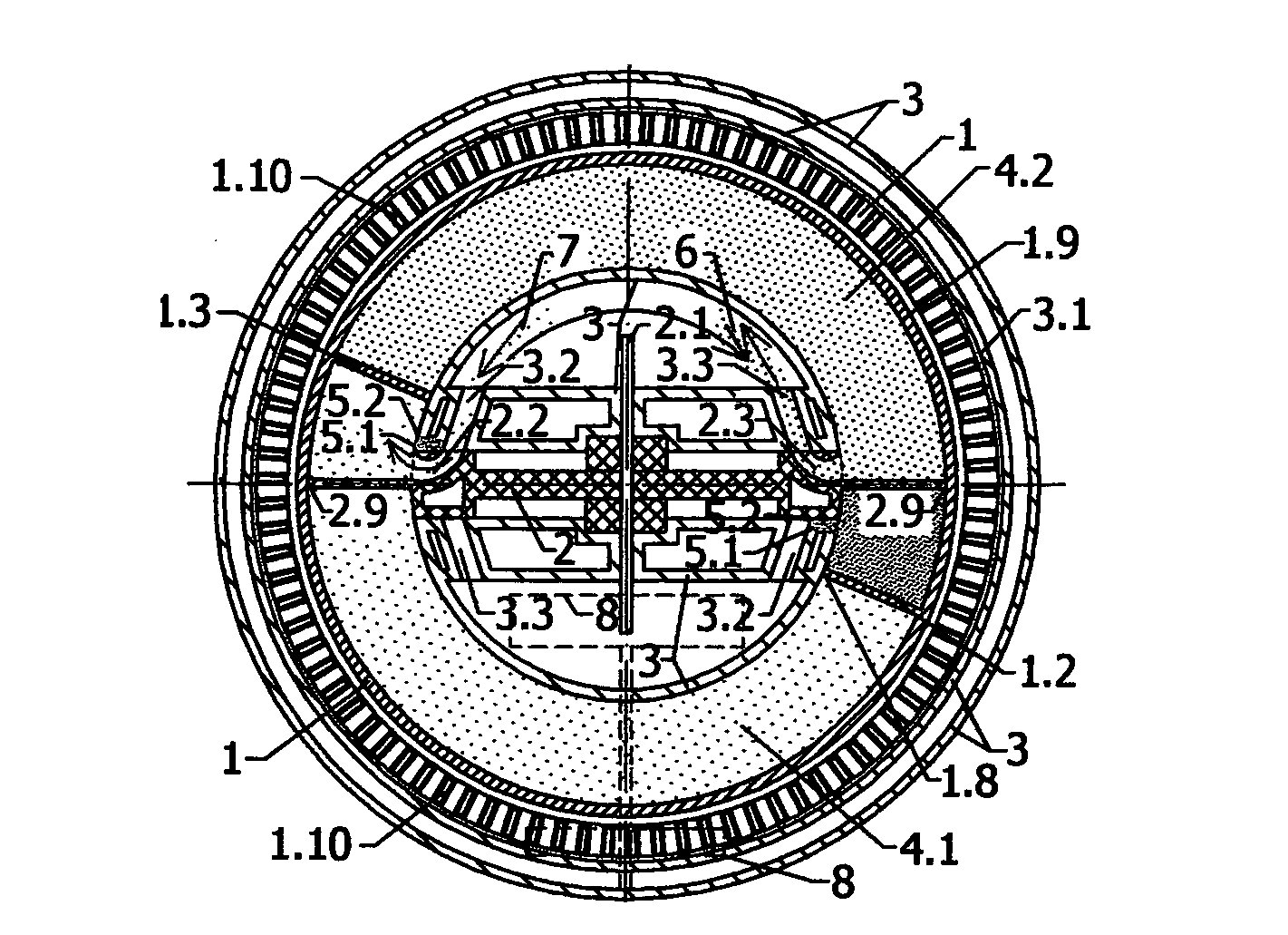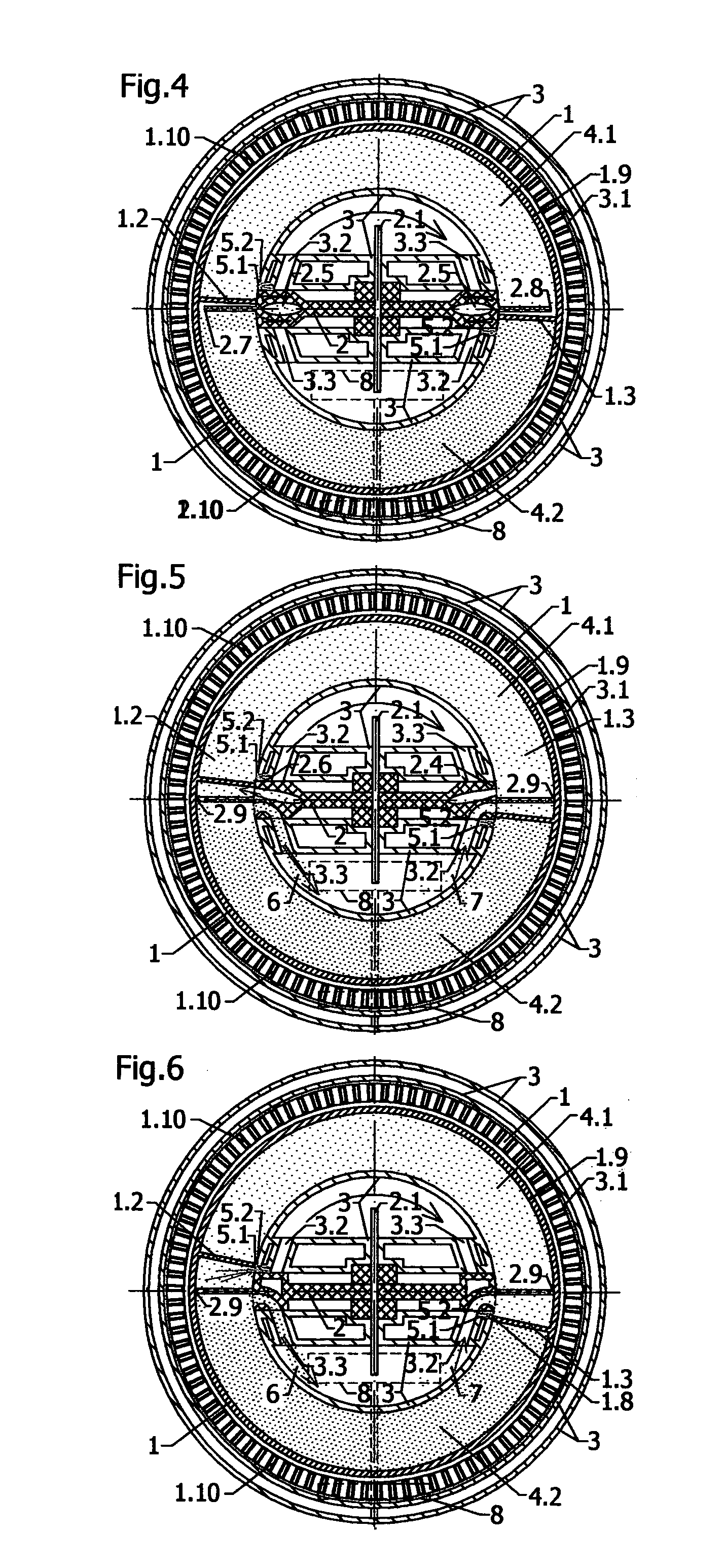Rotary internal combustion engine with annular chamber
a combustion engine and annular chamber technology, applied in the direction of rotary piston engines, rotary or oscillating piston engines, engines of intermeshing engagement types, etc., can solve the problems of no major concept change, instantaneous ignition of fuel mixture and explosion, etc., to reduce production costs, reduce size, and simplify
- Summary
- Abstract
- Description
- Claims
- Application Information
AI Technical Summary
Benefits of technology
Problems solved by technology
Method used
Image
Examples
Embodiment Construction
Realization
[0030]The rotary nasal annular engine with noses on the annular with internal combustion is unique and exceptional thanks to its original construction—it has only two (favourably more) rotary parts—rotor 1 and 2 (favourably other second rotors 9) placed in the block 3 and thanks to the processes typical for the operation of a combustion engine.
[0031]The rotary nasal annular engine with noses on the annular with internal combustion operates with the same principles as the rotary nasal engine with internal combustion, registered in the SR Industry Patent Office, under the registration No. PP 5068-2006, from 8 of Aug. 2006 and a rotary nasal engine with noses on the annular with internal combustion, registered in the SR Industry Patent Office, under the registration No. PP 5018-2007, from 2 Mar. 2007.
[0032]The rotary nasal annular engine with noses on the annular with internal combustion operates using at least one pair of the first rotor 1 and the second rotor 2 (favourably...
PUM
 Login to View More
Login to View More Abstract
Description
Claims
Application Information
 Login to View More
Login to View More - R&D
- Intellectual Property
- Life Sciences
- Materials
- Tech Scout
- Unparalleled Data Quality
- Higher Quality Content
- 60% Fewer Hallucinations
Browse by: Latest US Patents, China's latest patents, Technical Efficacy Thesaurus, Application Domain, Technology Topic, Popular Technical Reports.
© 2025 PatSnap. All rights reserved.Legal|Privacy policy|Modern Slavery Act Transparency Statement|Sitemap|About US| Contact US: help@patsnap.com



